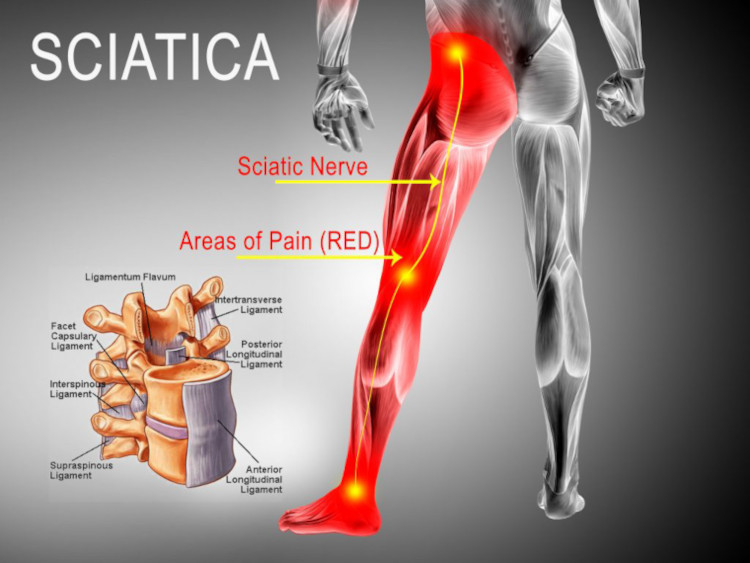

Sciatica and piriformis syndrome can seem similar in terms of symptoms, but the two conditions are actually quite different. Sciatica refers to irritation of the sciatic nerve. The sciatic nerve originates from nerve roots in the lumbar spine. The most common cause of sciatica is the compression of one or more of the nerve roots. This is typically
due to a herniated disc or degeneration in the lower lumbar spine. Sciatica will usually begin with pain in the buttock
area and, depending on the severity of the nerve compression and inflammation, may extend down the entire leg to
the ankle and foot.
Piriformis syndrome, on the other hand is not caused by nerve irritation. It is caused by a contraction or tightness in
the piriformis muscle which attaches to the upper femur and runs across the back of the pelvis to the outer edge of
the sacrum. The tight knots of contraction in the piriformis muscle may cause referred pain that can be very similar
to that of sciatic pain. The symptoms may be indistinguishable from those of sciatica, as both can cause pain in the
buttock area that can radiate down the leg.
Both sciatica and piriformis syndrome can manifest as pain, tingling, burning, shock sensations, and/or numbness
down the leg, often all the way to the foot. In addition, both sciatica and piriformis syndrome tend to be at least
partially related to biomechanical functional problems in the joints of the back and pelvis.
How to Test for Sciatica:
If you would like to attempt to determine the correct diagnosis, you can try the following. From a seated position,
straighten the knee on the same side of the pain. Hold the leg out straight and parallel to the floor. If this position
causes an increase in symptoms, it’s a good indicator of true sciatica.
How to Test for Piriformis Syndrome
To test for piriformis syndrome, from a sitting position, bend the leg and pull the knee toward the opposite shoulder.
An increase in sciatica-like symptoms in this position is a strong indication of piriformis syndrome.
Regardless of the diagnosis, a program of corrective based exercises and stretches to reposition the load bearing
joints into their proper alignment and help them to resume proper function is key. Massage techniques may be
helpful with realignment and release as well.
The following misalignments could be present in your body and should be addressed in order to alleviate the
symptoms of both these conditions:
• Everted or inverted feet
• Prontated or Supinated feet
• Valgus or Varus knees
• External or Internal femur rotation
• Anterior / Posterior pelvic tilt
• Pelvic or thoracic rotation
• Thoracic offset
• Kyphosis of the thoracic back
• Swayback
• Forward shoulder – head position
Any of these postural misalignments can cause inefficient movement and pain symptoms. Muscles move
the bones in your body; therefore, if a muscle moved a bone into a faulty position, a muscle can move the
bone back to its neutral position. A holistic approach to the human body is imperative and often focusing
directly on a symptom, won’t cure the root dysfunction. Be sure to address the alignment of the entire
kinetic chain in order to relieve this pain in the butt once and for all.

I think you have noted some very interesting points, thanks for the post.
I went over this website and I believe you have a lot of great info , bookmarked (:.